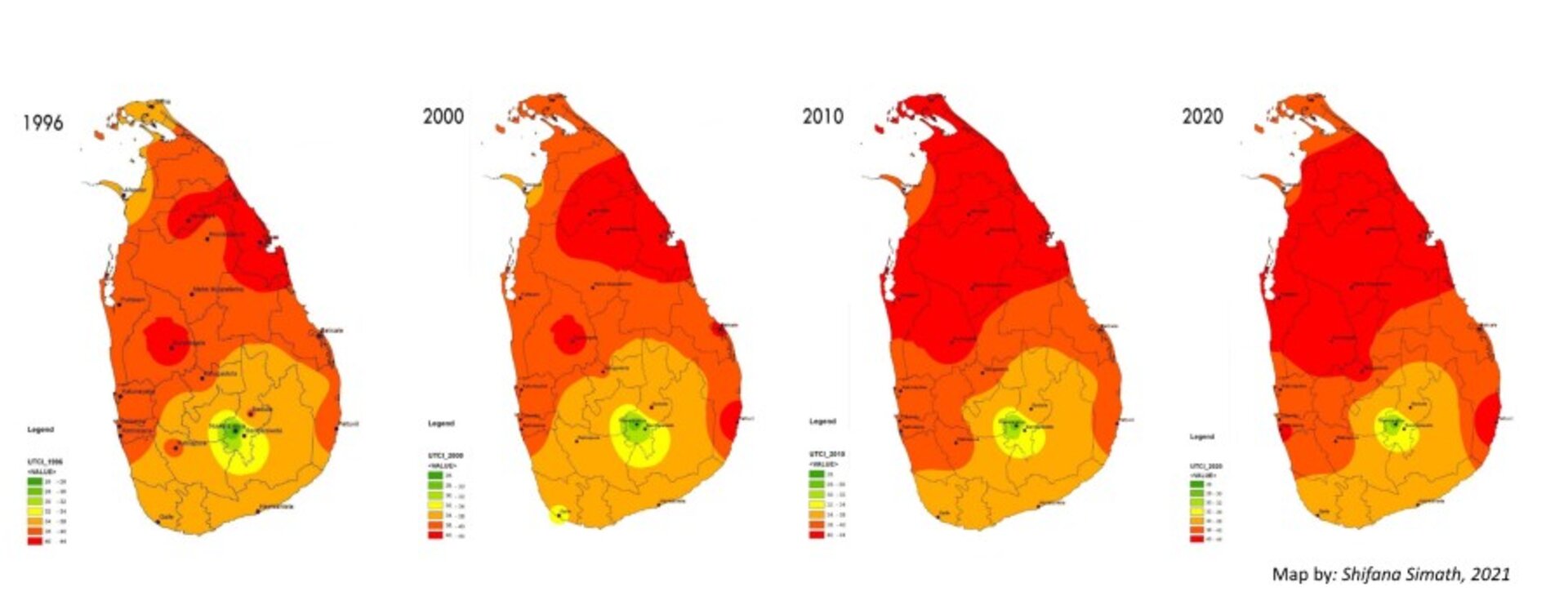Taking the heat out of Sri Lankan climate crisis

Glasgow Caledonian University researchers are to create a ‘heat map’ of Sri Lanka in a bid to help city planners curb the health impact of climate change on its population in urban areas.
The research team is responding to evidence that higher air pollution, reduced night-time cooling and increased temperatures adversely affect human health. This ‘urban heat stress’ causes major health problems such as exhaustion, respiratory problems, heatstroke and heat-related mortality.
The project aims to capture the scale of heat stress – using heat mapping and recorded medical complaints – resulting from both global climate change and ‘haphazard urbanisation’ in Sri Lanka and identify urban planning, design and development guidelines that could enhance resilience to heat stress in these areas.
Professor Rohinton Emmanuel, director of GCU’s BEAM Centre, said: “South Asia is one of the regions most likely to experience extreme heat stress as a result of global warming, which worsens health, energy and economic wellbeing. This is made worse still by urban growth.
“While the scale and nature of climate change-induced heat stress may be unavoidable in the immediate future, the identification of coping strategies, and areas where such strategies are most likely to benefit human wellbeing, would add resilience, especially among city dwellers.
“There are two unknowns at present − the scale of the problem needs to be quantified, and areas where urban planning and policy interventions are most likely to curb heat stress need to be identified to better target the limited available resources.”
The research team expects to map, model and identify coping strategies by the end of the year.
Joining Professor Emmanuel on the GCU team are Nusrath Maharoof (PhD Student) and Shifana Simath (Master’s student). They will partner researchers from the University of Reading, the Urban Development Authority of Sri Lanka, plus the University of Moratuwa, and the Sri Lankan Department of Meteorology.
The project is being funded by the Natural Environment Research Council (NERC), the Global Challenges Research Fund (GCRF), and the Global Challenges and Sustainable Development Unit (GCSDU).
